Star mounds (fetu ma'a or tia ave), a truly Samoan feature, have been extensively covered in Samoan archaeological literature (see References below). Star mound is a slight misnomer as not all of these “mis-sharpened” mounds or platforms are strictly star shaped. They come in all shapes and sizes. They might be more appropriately referred to as cog mounds. These mounds, made of earth, stone, and earth and stone combined, come in various forms from a single cog (?) to mounds with up to 11 cogs or arms. On Upolu and Savaii, star mounds are userally between 15 and 20 meters wide and between tens of cenimeters to a meter or more in height. The majority seem to be found in the “deep forest” but they have also been found in village areas less than a kilometer from the coast. They are a singularly Samoan feature, and appear all though out Samoa. 79 have been reported in American Samoa (Herdrich:1993), and recently, through the use of LiDAR, more than 75 have been found in the Aleipata district of Upolu alone, while many more have been found throughout other parts of Upolu and Savii. There use has been greatly debated. It was first reported that star mounds, also known as tia se lupe (pigeon snaring mounds), were used solely for the chiefly sport of pigeon catching, but more recently a more comprehensive view seems to be developing that accepts their possible broader religious significance. For a more information see the References at the end of this tutorial. In the following photos we have tried to make the reader familiar with what these star mounds look like not only on LiDAR, but also at ground level and in aerial photos. |
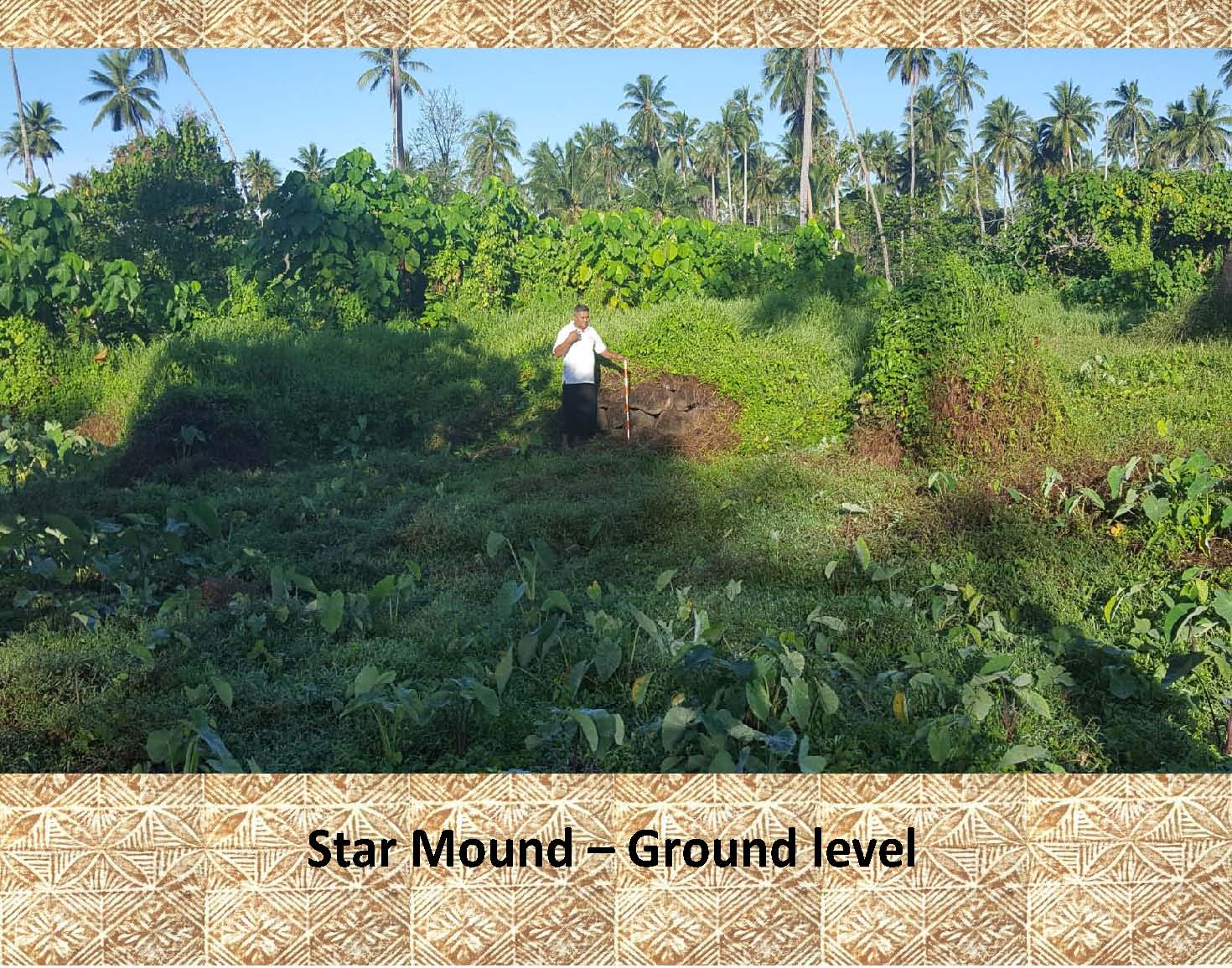
|
The next eight photos (from Vaitoomuli, Savaii) are all of the same star mound. The photo at the left is a picture of the star mound when it was first “discovered”. The small dark patch in the center of the photo has been cleared to reveal the stone that makes up this mound. Notice the 1 meter photo scale and person in the photo for scale. Also notice how the mound is completely covered with vegetation. |
|
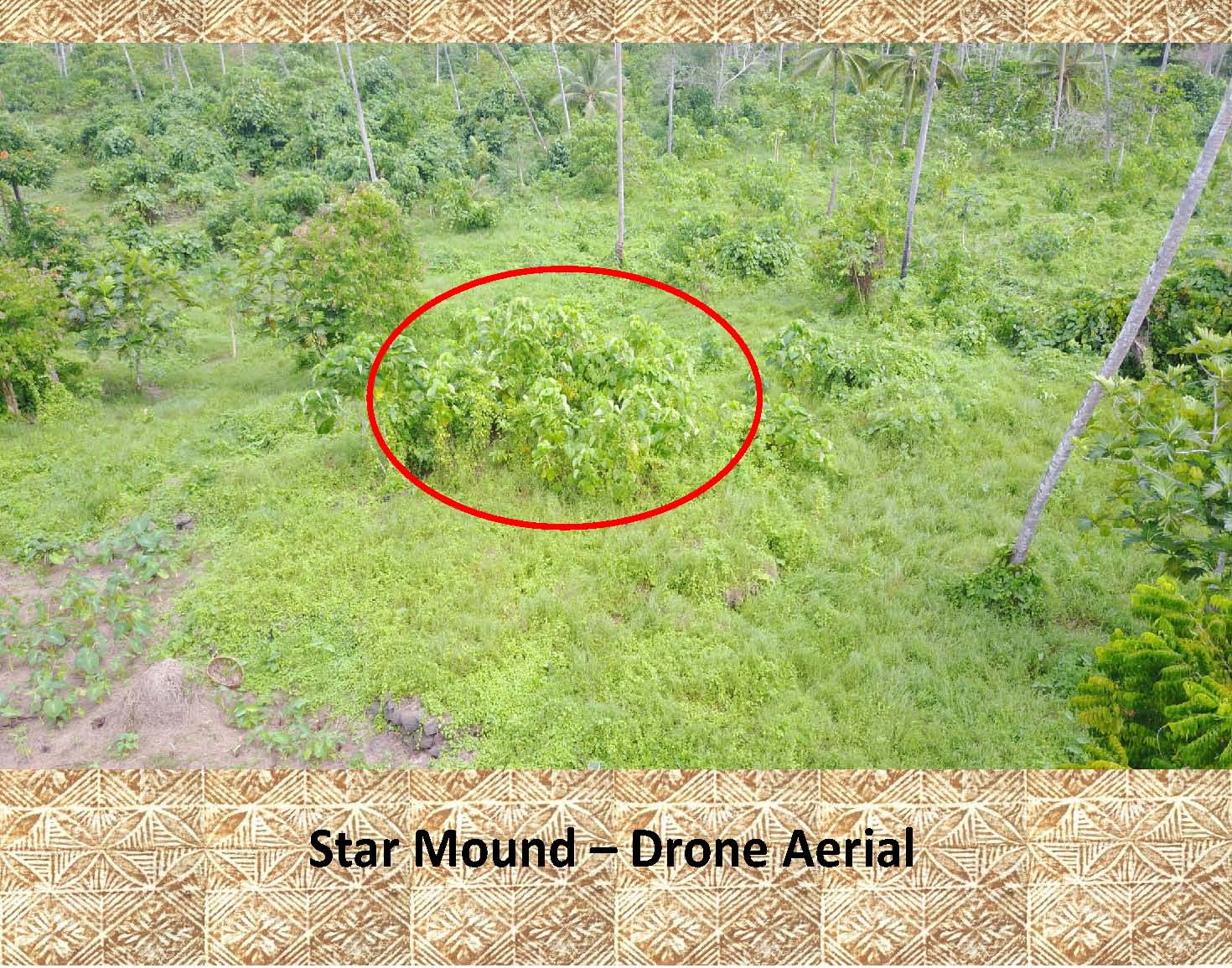 |
This is a drone photograph of the same star mound. Again notice the dense vegetation covering the mound. |
|
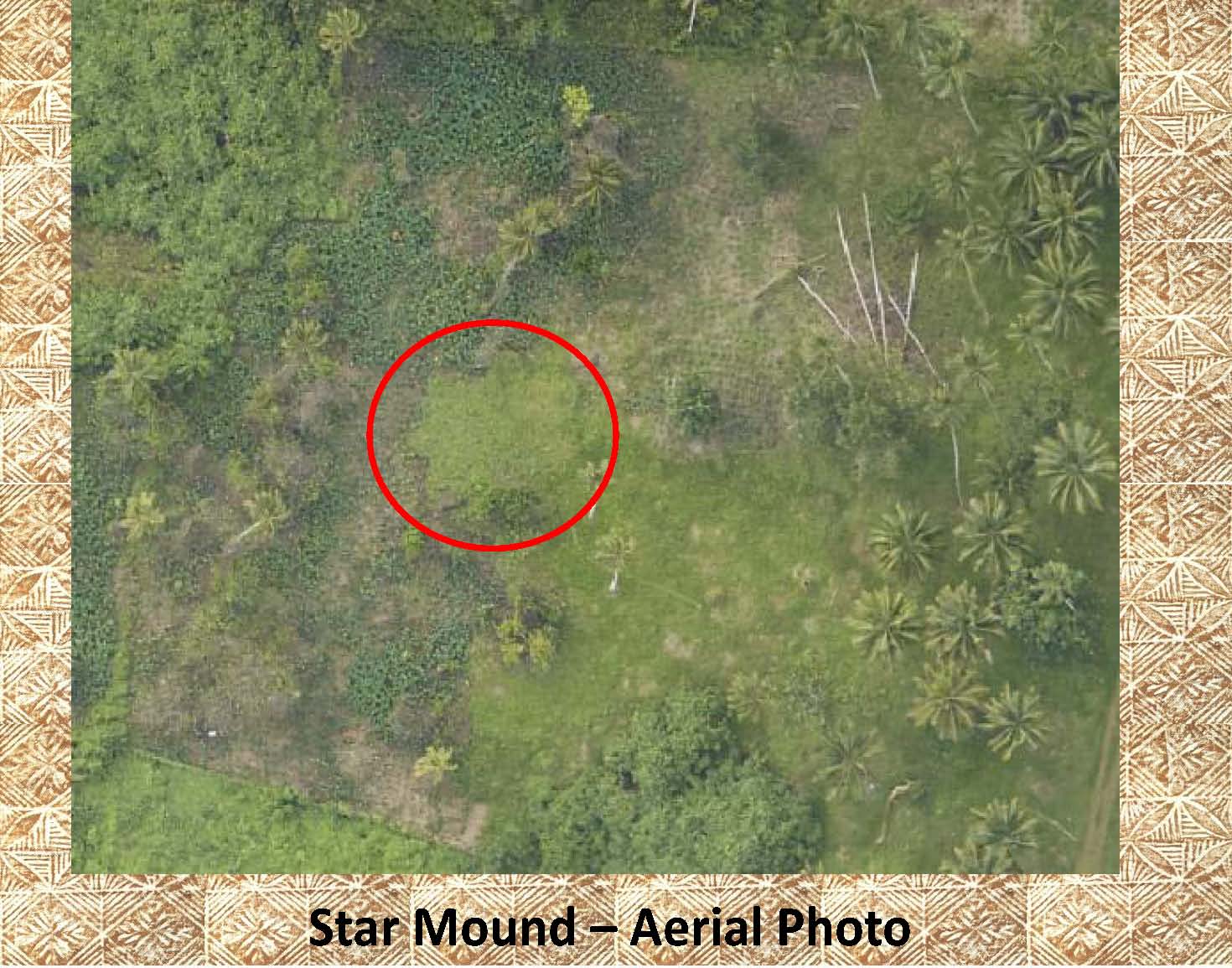 |
This is a “close up” aerial photo of the same mound taken several years before the drone photo above. Again, notice the change in vegetation covering the mound. The mound has been circled in red to make it easier to find. In this aerial the outline of the mound can be easily seen, although it has been mostly obscured by the time the drone photo (shown above) was taken. |
|
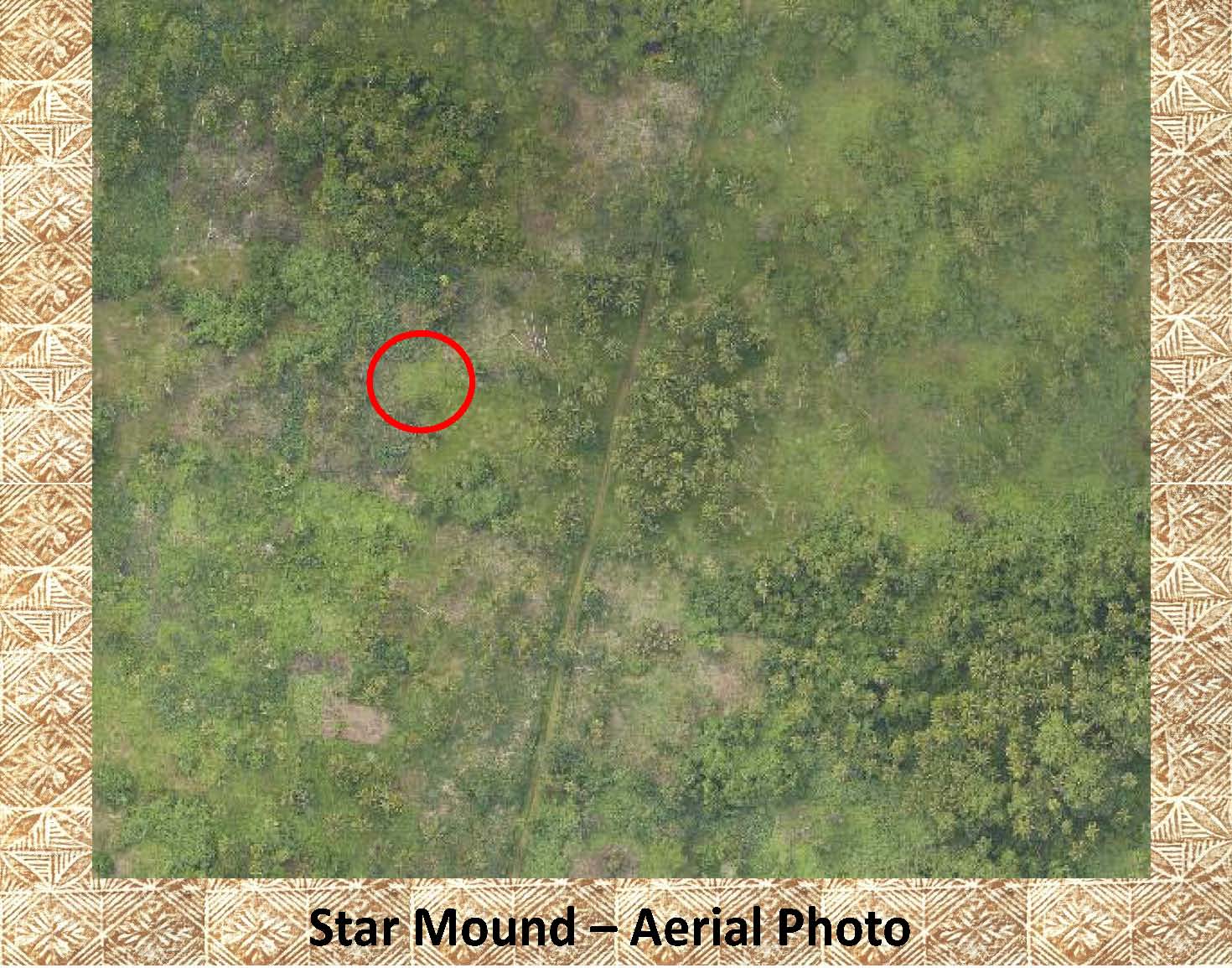 |
This is the “standard” aerial view of the same photo as above. Again the star mound is circled in red. At this altitude it is difficult to see the mound, but once shown where it is, its shape can be seen. |
|
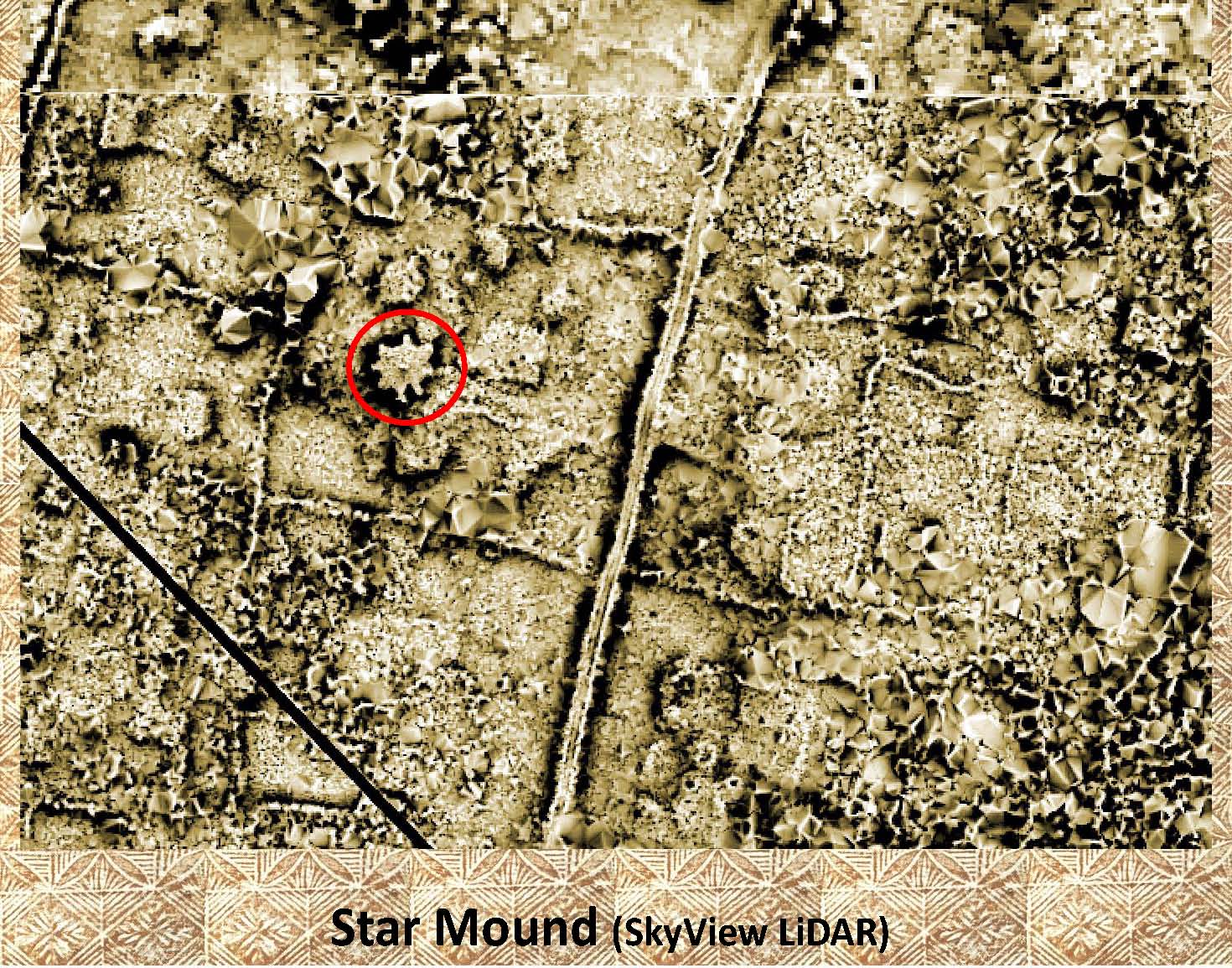 |
This is a LiDAR image taken at about the same scale as the previous aerial photo, notice how strikingly the star mound appears in the image. Also notice that it is not an isolated feature, but is surrounded by walls, platforms and other archaeological features. Notice the 8 arms or cogs visible on the star mound. |
|
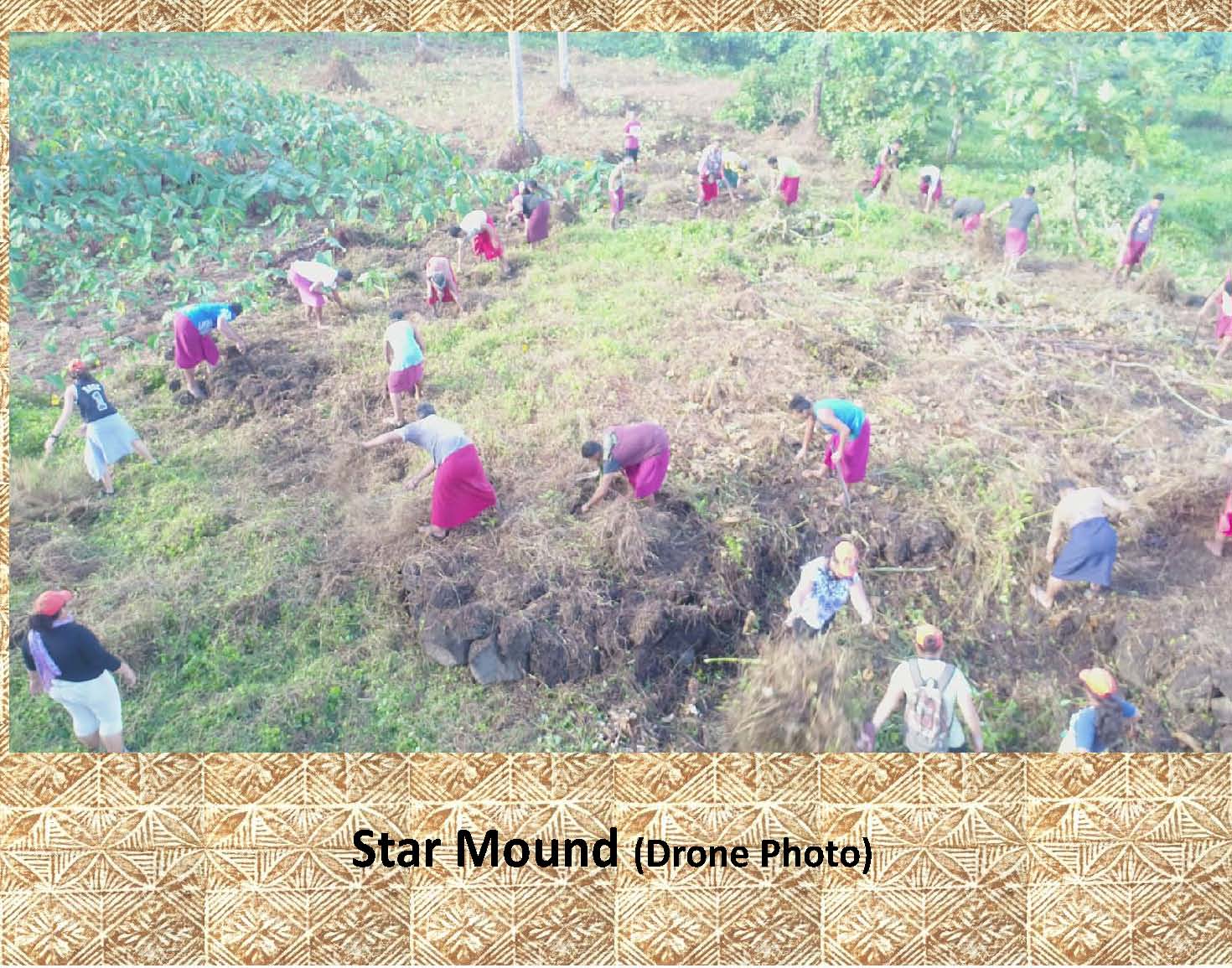 |
In this photo the village aumaga (untitled men) are clearing the star mound seen in the previous photos. |
|
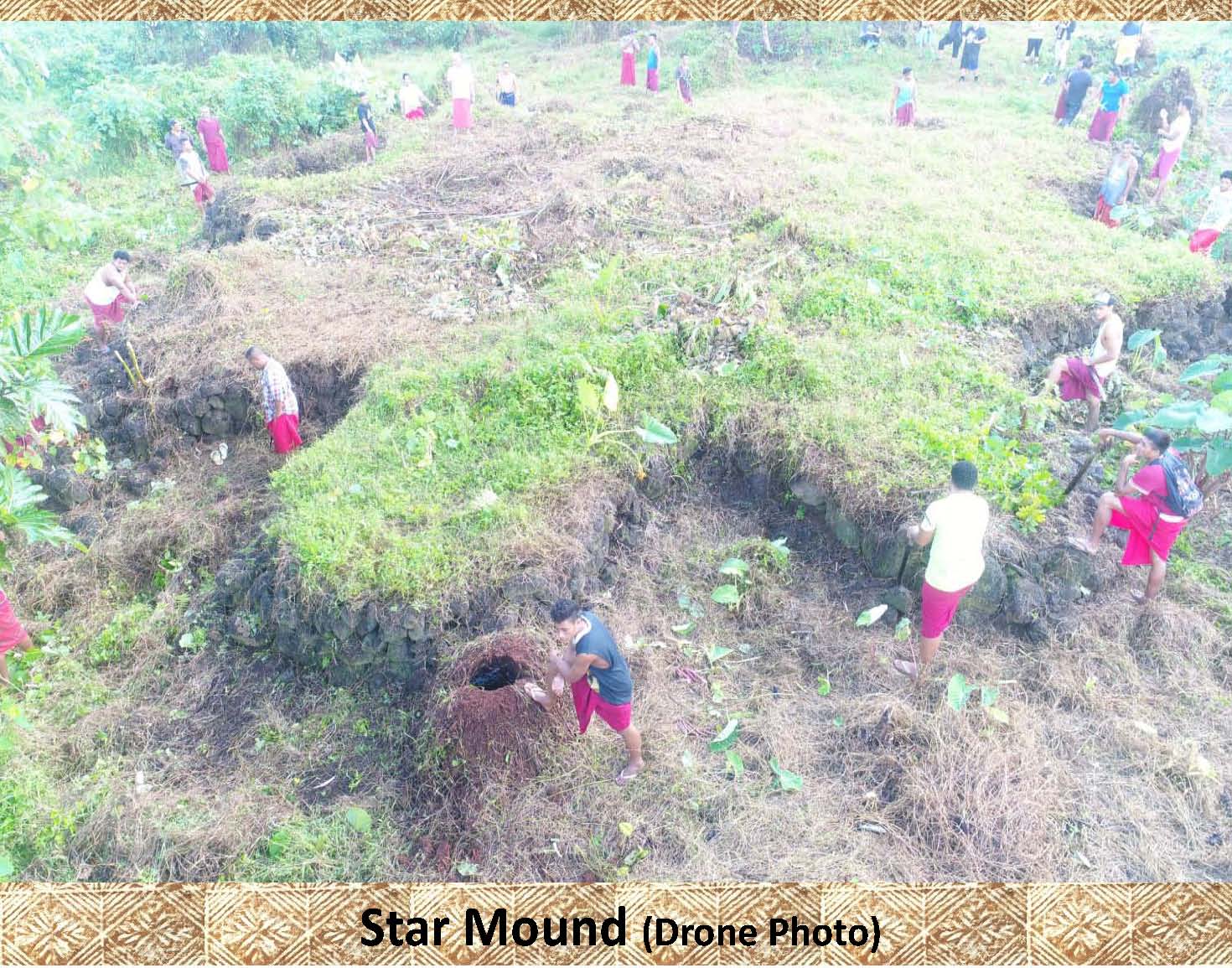 |
This photo shows another view of the star mound as it is being cleared. |
|
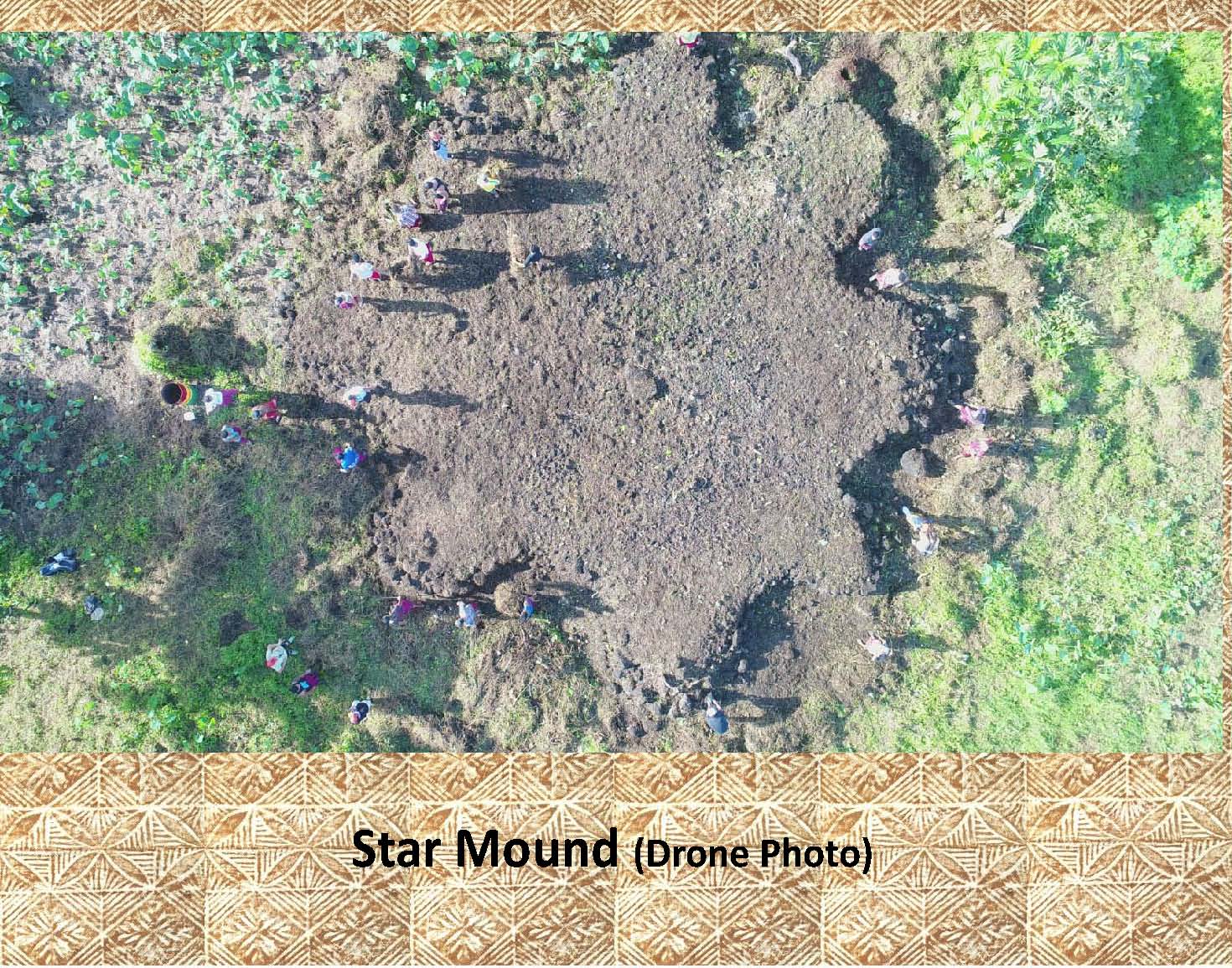 |
This is an overhead drone photo of what the star mound looked like after it was completely cleared of vegetation. Again, noticed the 8 arms or cogs on the star mound. |
|
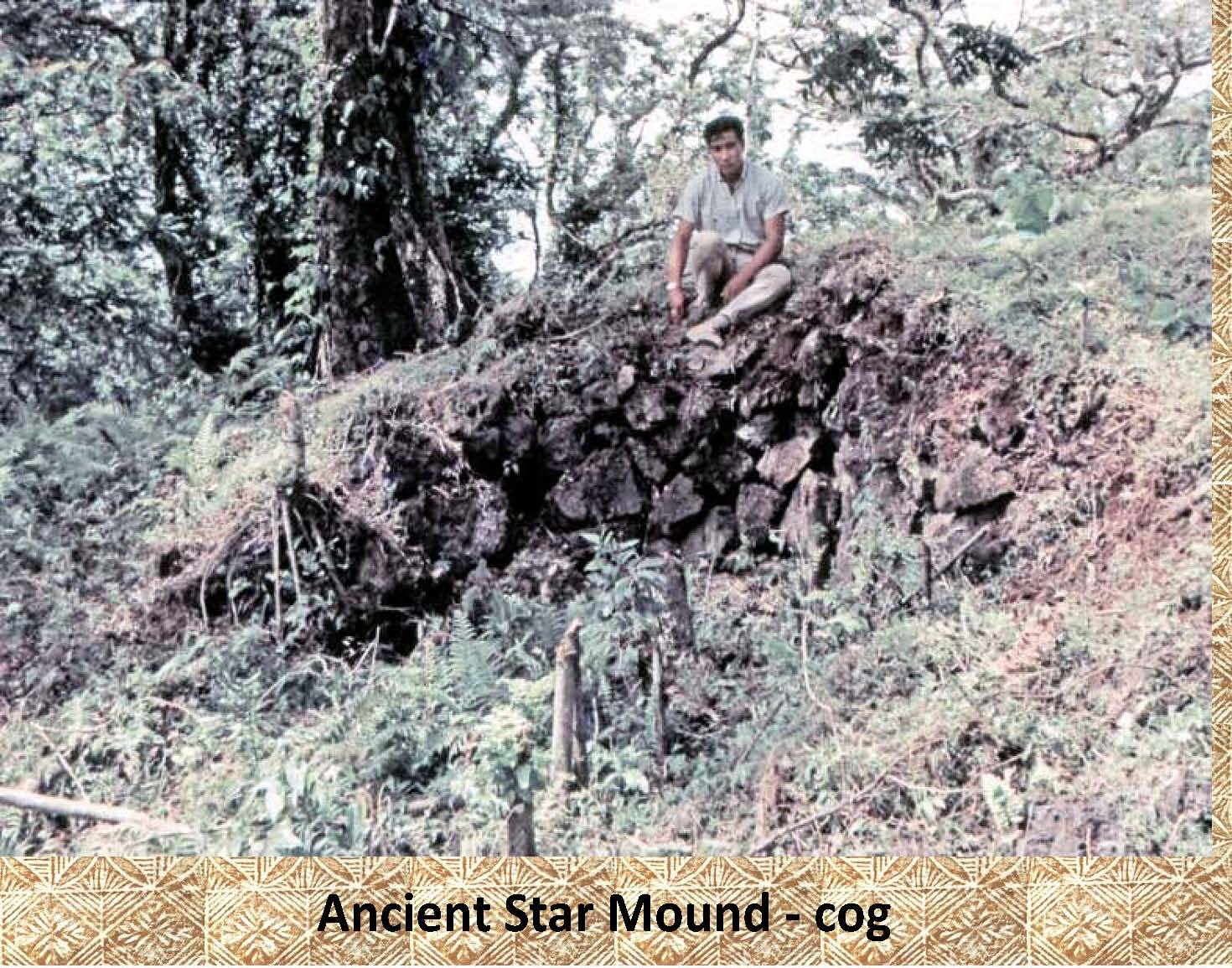 |
This photo shows one of the arms or cogs from another star mound. |
|
 |
This picture of a star mound shows the mortar less stone construction used in Samoan mounds and platforms in general and in this case a star mound specifically. (Malaefono Star Mound, Saleimoa, Upolu - see: Reference below: Wehlin(2007)) |
|
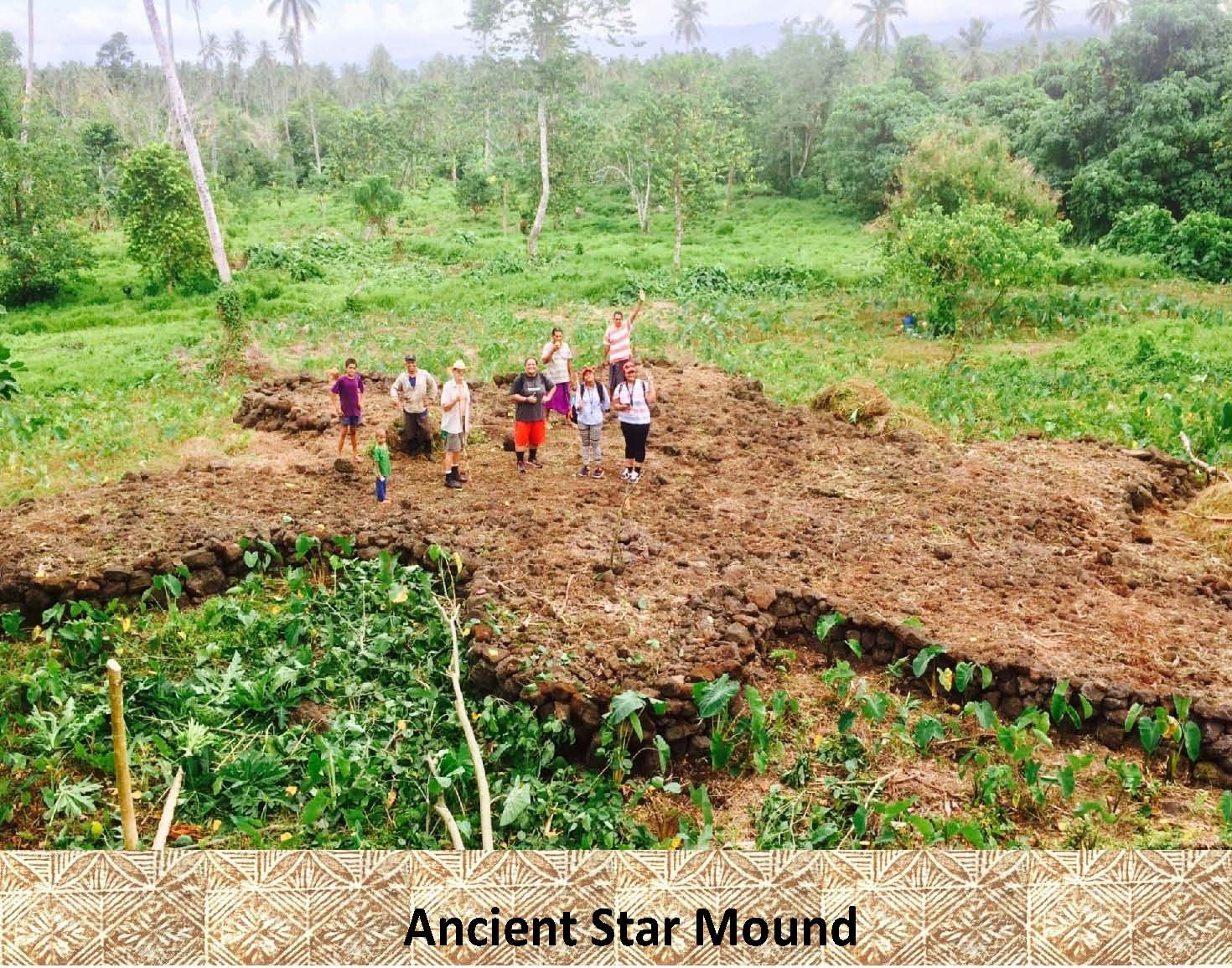 |
Here is another drone level photo showing the variation in shape and size of star mounds (Vaitoomuli, Savaii). |
|
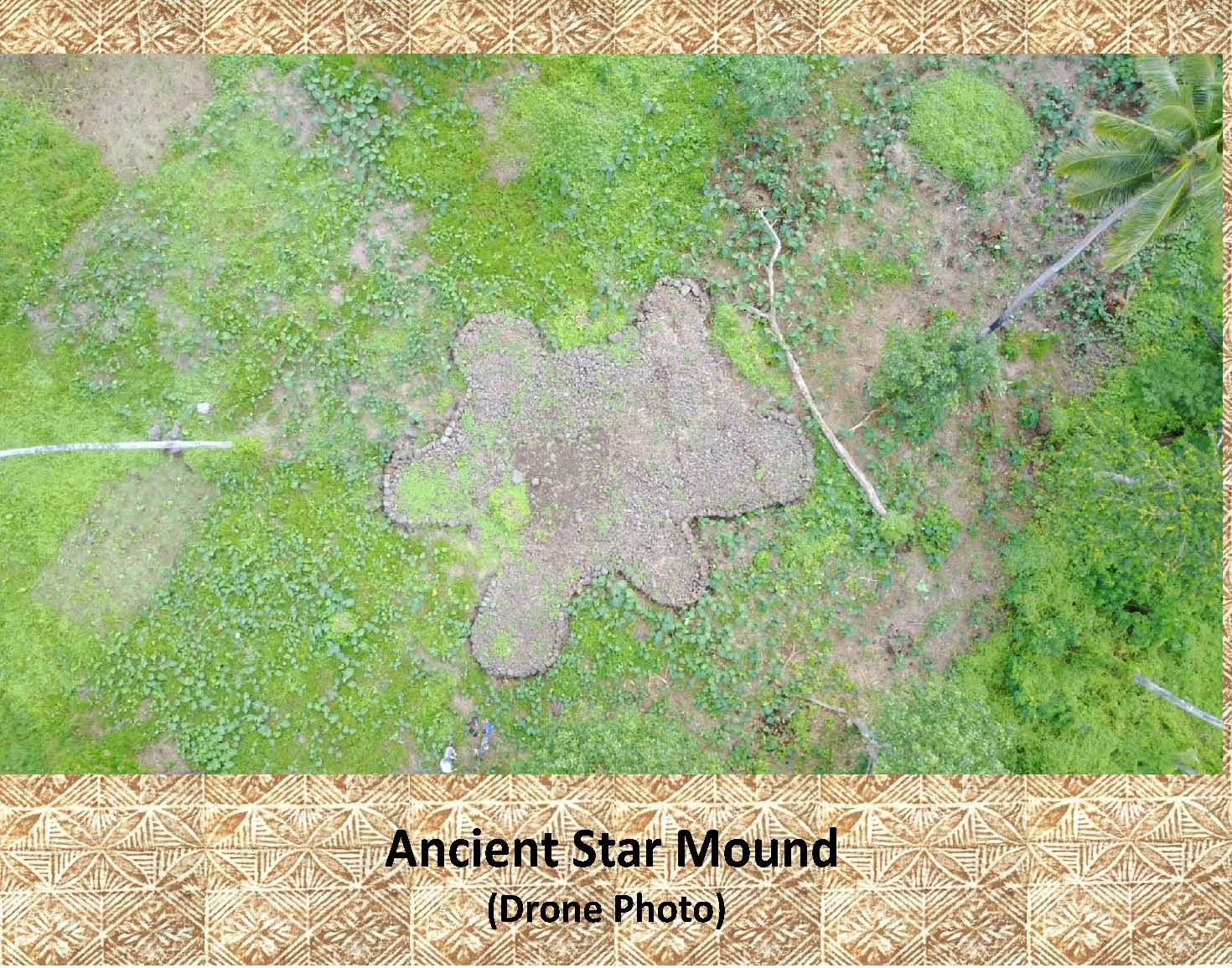 |
This is an overhead drone photo of the star mound shown in the photo above. Note that this star mound has only 6 arms or cogs. |
|
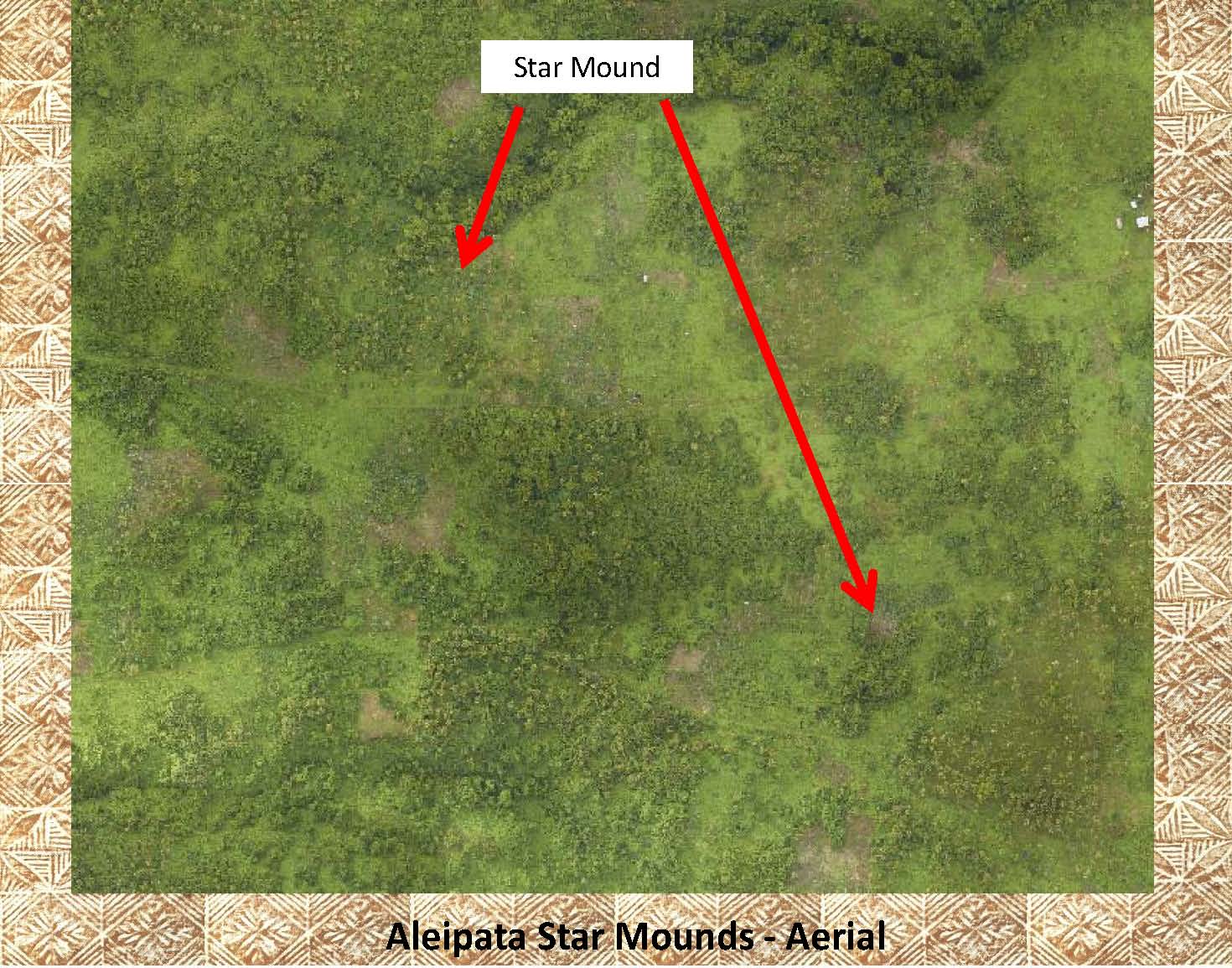 |
This photo is a typical example of what a star mound looks like on an aerial photo. As you can see (or not see) it is very difficult to locate the star mounds, even when their location is shown. |
|
 |
This is a LiDAR image at the same scale as the previous aerial photo, again, notice the ease at which star mounds can be located. Also, notice some of the other archaeological features in this image (though many are not as easily seen at this scale). Can you see the other 2 star mounds next to the white label (on either side of the red arrow)[see next image for locations]? |
|
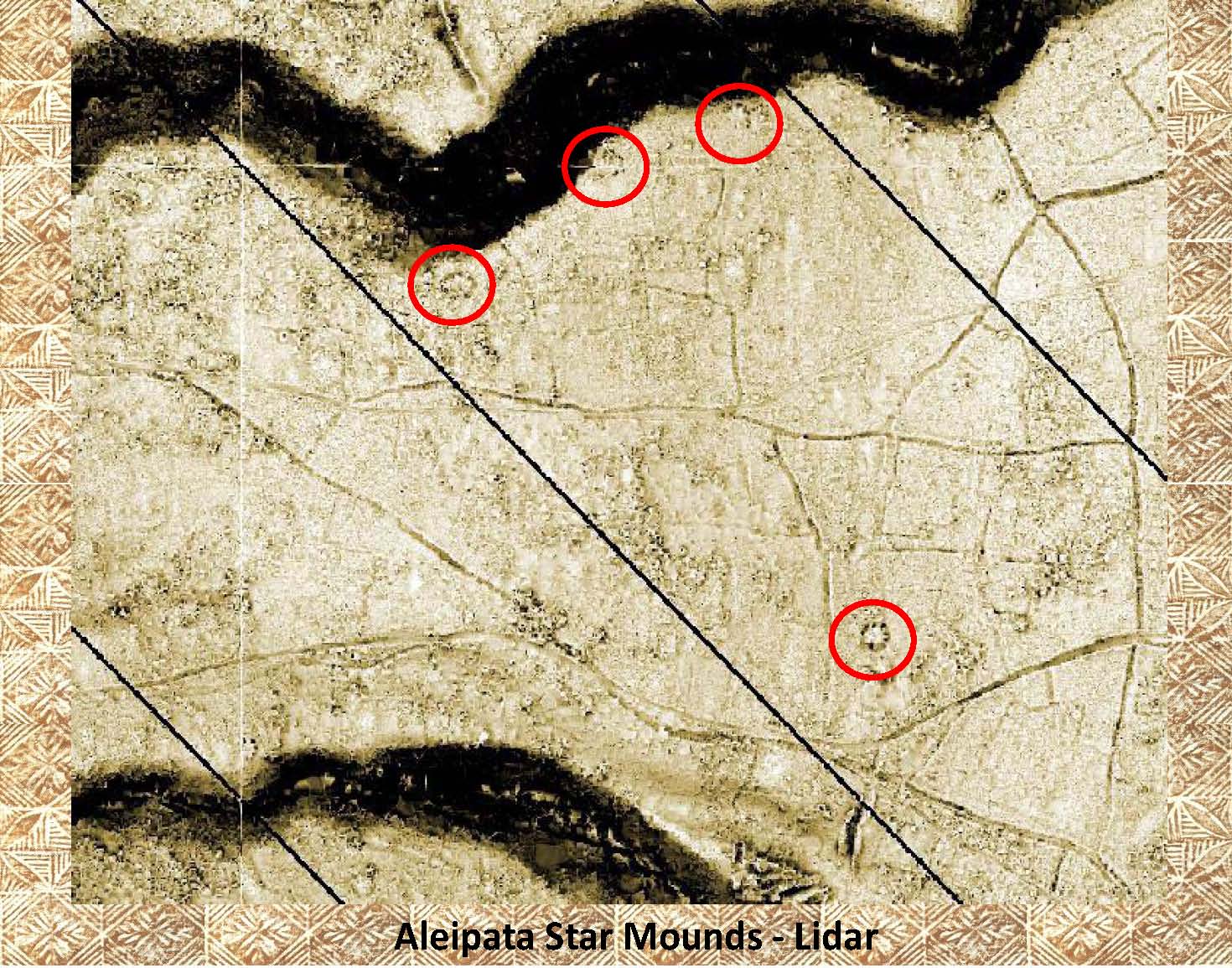 |
On this marked LiDAR image you can see the locations of all 4 star mounds from the previous image. |
|
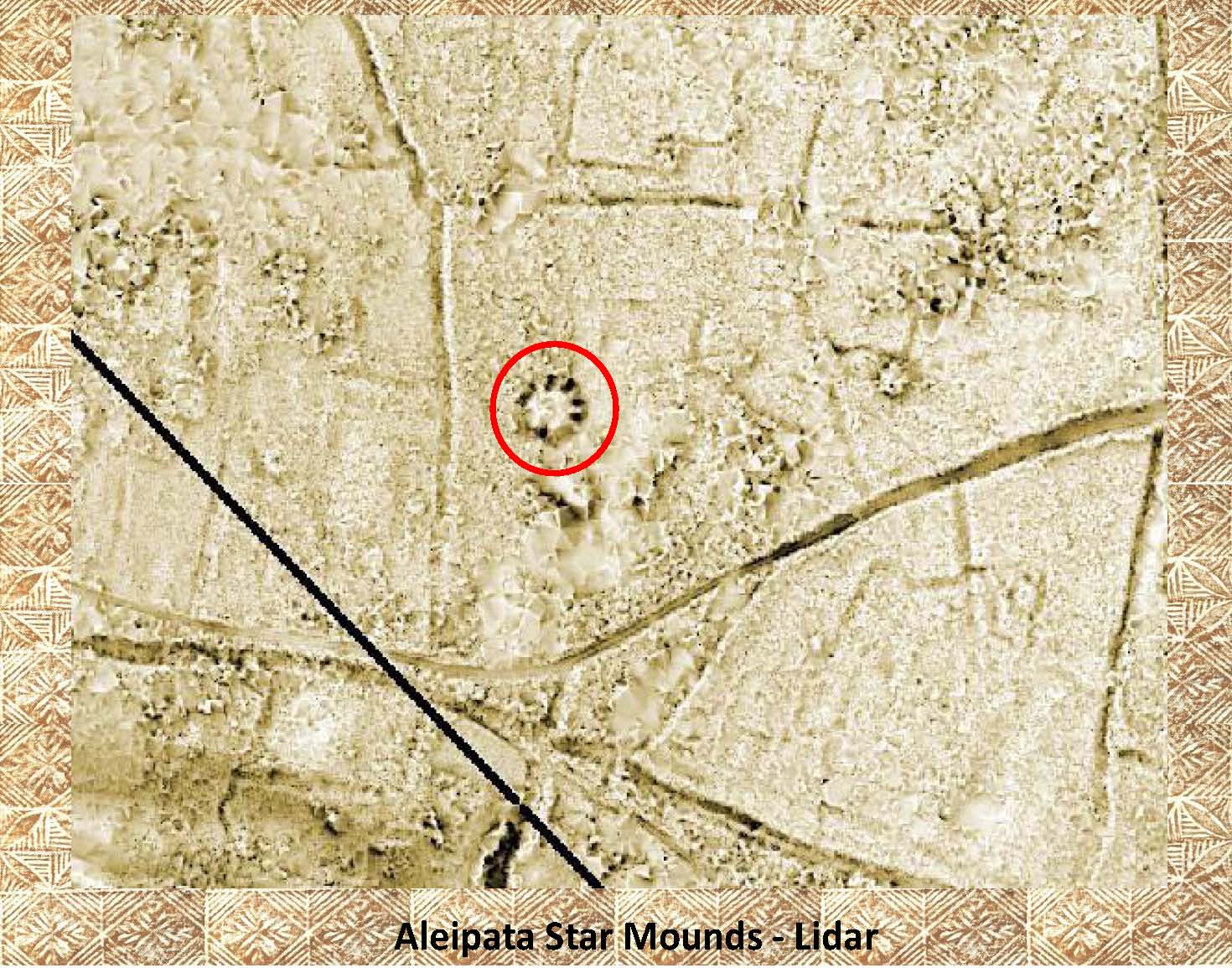 |
This is an enlargement of the star mound in the lower part of the image above. Notice the other features in the vicinity. |
|
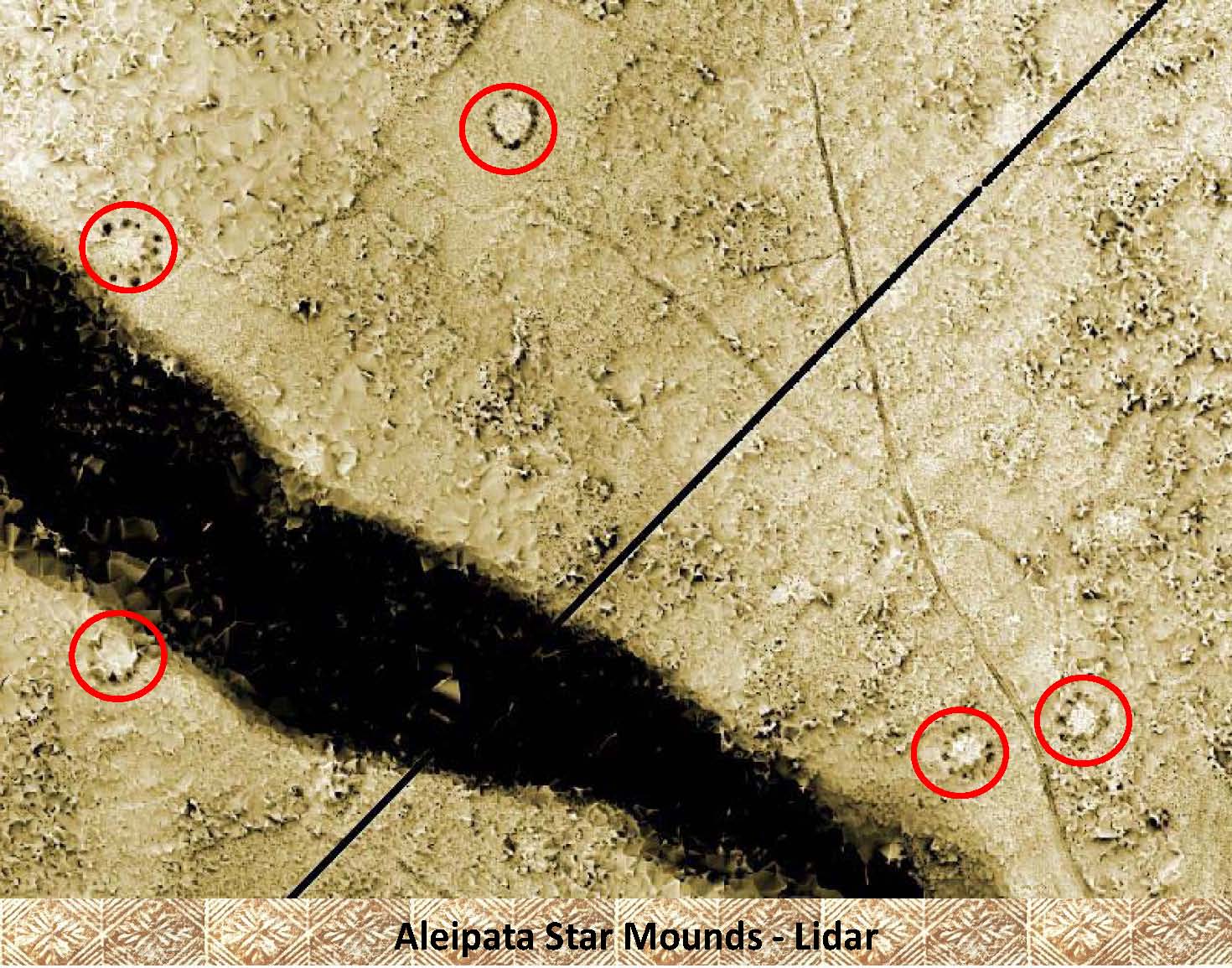 |
Here is a LiDAR image of 5 star mounds in close proximity to each other from Aleipata District, Upolu. These are covered with vegetation, thus the less recognizable shapes. |
|
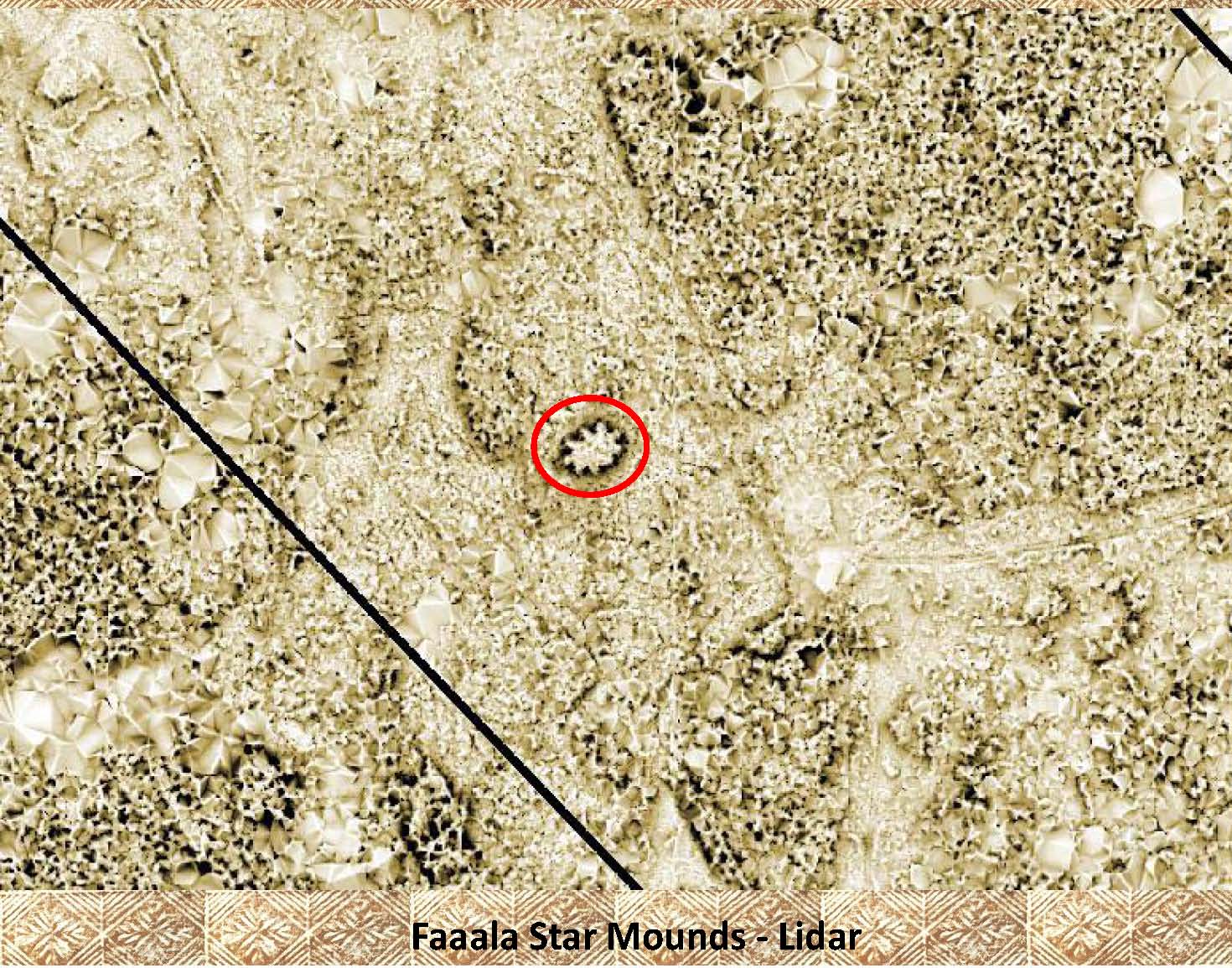 |
This single 9 arm star mound is from a location 4.5 kilometers inland from Faaala, Savaii. It is about 15 x 22 meters in size. Notice the portion of a walled walkway in the upper left corner of the image. |
|
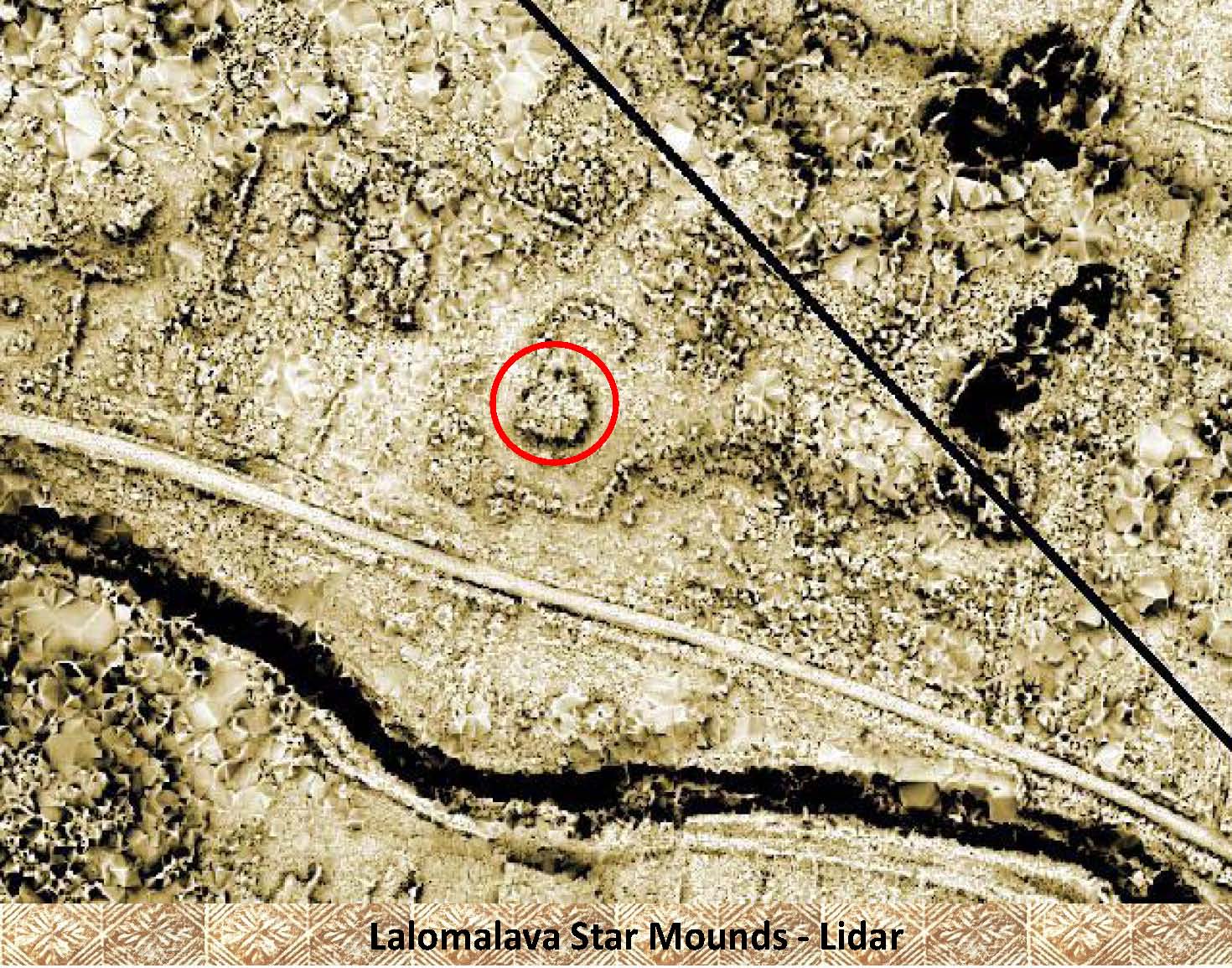 |
These last 3 images are from a group of 10 star mounds about 2.5 to 3.5 kilometers inland from the village of Lalomalava, Savaii. This one is about 24 meter wide. Notice the other archaeological features around all of these star mounds. |
|
 |
Difficult to see this 15-20 meter wide star mound was just missed by the modern road that is obviously built around it. |
|
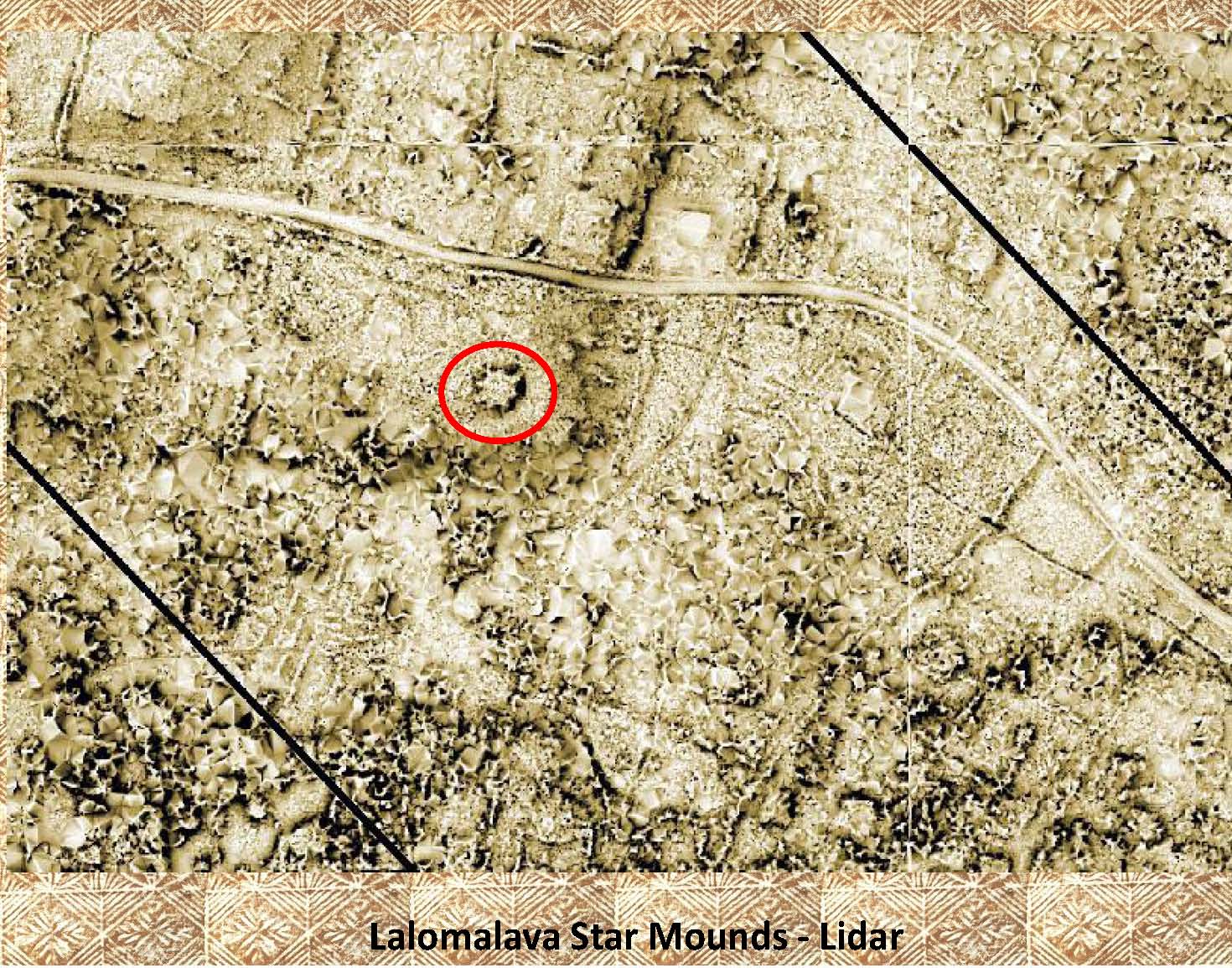 |
This last star mound built on a bluff overlooking the area below it and to the right, has 8 arms and is 15 meters in width. |
|
|
References: Additional information about star mounds can be found in the following publication: Green and Davidson (1974) Archaeology in Western Samoa, Volume 2, Pp 191-194 Herdrich (1991) Towards an Understanding of Samoan Star Mounds Herdrich (1993) Samoan Tia 'Ave and Social Structure Wehlin (2007) Archaeological Investigations of a Stone Platform at the Malaefono Plantation Upolu Samoa |